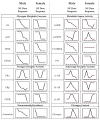Norepinephrine Regulation of Ventromedial Hypothalamic Nucleus Astrocyte Glycogen Metabolism
- PMID: 33451134
- PMCID: PMC7828624
- DOI: 10.3390/ijms22020759
Norepinephrine Regulation of Ventromedial Hypothalamic Nucleus Astrocyte Glycogen Metabolism
Abstract
The catecholamine norepinephrine (NE) links hindbrain metabolic-sensory neurons with key glucostatic control structures in the brain, including the ventromedial hypothalamic nucleus (VMN). In the brain, the glycogen reserve is maintained within the astrocyte cell compartment as an alternative energy source to blood-derived glucose. VMN astrocytes are direct targets for metabolic stimulus-driven noradrenergic signaling due to their adrenergic receptor expression (AR). The current review discusses recent affirmative evidence that neuro-metabolic stability in the VMN may be shaped by NE influence on astrocyte glycogen metabolism and glycogen-derived substrate fuel supply. Noradrenergic modulation of estrogen receptor (ER) control of VMN glycogen phosphorylase (GP) isoform expression supports the interaction of catecholamine and estradiol signals in shaping the physiological stimulus-specific control of astrocyte glycogen mobilization. Sex-dimorphic NE control of glycogen synthase and GP brain versus muscle type proteins may be due, in part, to the dissimilar noradrenergic governance of astrocyte AR and ER variant profiles in males versus females. Forthcoming advances in the understanding of the molecular mechanistic framework for catecholamine stimulus integration with other regulatory inputs to VMN astrocytes will undoubtedly reveal useful new molecular targets in each sex for glycogen mediated defense of neuronal metabolic equilibrium during neuro-glucopenia.
Keywords: adrenergic receptor; glycogen phosphorylase brain type; laser-catapult microdissection; norepinephrine; ventromedial hypothalamic nucleus.
Conflict of interest statement
The authors declare no conflict of interest.
Figures


Similar articles
-
Norepinephrine regulation of ventromedial hypothalamic nucleus metabolic transmitter biomarker and astrocyte enzyme and receptor expression: Impact of 5' AMP-activated protein kinase.Brain Res. 2019 May 15;1711:48-57. doi: 10.1016/j.brainres.2019.01.012. Epub 2019 Jan 7. Brain Res. 2019. PMID: 30629946 Free PMC article.
-
Norepinephrine control of ventromedial hypothalamic nucleus glucoregulatory neurotransmitter expression in the female rat: Role of monocarboxylate transporter function.Mol Cell Neurosci. 2019 Mar;95:51-58. doi: 10.1016/j.mcn.2019.01.004. Epub 2019 Jan 17. Mol Cell Neurosci. 2019. PMID: 30660767 Free PMC article.
-
Impact of caudal hindbrain glycogen metabolism on A2 noradrenergic neuron AMPK activation and ventromedial hypothalamic nucleus norepinephrine activity and glucoregulatory neurotransmitter marker protein expression.Neuropeptides. 2020 Aug;82:102055. doi: 10.1016/j.npep.2020.102055. Epub 2020 May 16. Neuropeptides. 2020. PMID: 32451071 Free PMC article.
-
Norepinephrine Regulation of Ventromedial Hypothalamic Nucleus Metabolic-Sensory Neuron 5'-AMP-Activated Protein Kinase Activity: Impact of Estradiol.Int J Mol Sci. 2020 Mar 16;21(6):2013. doi: 10.3390/ijms21062013. Int J Mol Sci. 2020. PMID: 32188013 Free PMC article. Review.
-
Aerobic glycolysis during brain activation: adrenergic regulation and influence of norepinephrine on astrocytic metabolism.J Neurochem. 2016 Jul;138(1):14-52. doi: 10.1111/jnc.13630. Epub 2016 Jun 10. J Neurochem. 2016. PMID: 27166428 Review.
Cited by
-
Validity of mental and physical stress models.Neurosci Biobehav Rev. 2024 Mar;158:105566. doi: 10.1016/j.neubiorev.2024.105566. Epub 2024 Feb 1. Neurosci Biobehav Rev. 2024. PMID: 38307304 Free PMC article. Review.
-
Muscle Glycogen Phosphorylase and Its Functional Partners in Health and Disease.Cells. 2021 Apr 13;10(4):883. doi: 10.3390/cells10040883. Cells. 2021. PMID: 33924466 Free PMC article. Review.
-
Hypoglycemic and post‑hypoglycemic patterns of glycogen phosphorylase isoform expression in the ventrolateral ventromedial hypothalamic nucleus: impact of sex and estradiol.Acta Neurobiol Exp (Wars). 2021;81(2):196-206. Acta Neurobiol Exp (Wars). 2021. PMID: 34170267 Free PMC article.
-
Ventrolateral ventromedial hypothalamic nucleus GABA neuron adaptation to recurring Hypoglycemia correlates with up-regulated 5'-AMP-activated protein kinase activity.AIMS Neurosci. 2021 Sep 3;8(4):510-525. doi: 10.3934/Neuroscience.2021027. eCollection 2021. AIMS Neurosci. 2021. PMID: 34877402 Free PMC article.
-
Sex-Dimorphic Glucocorticoid Receptor Regulation of Hypothalamic Primary Astrocyte Glycogen Metabolism: Interaction with Norepinephrine.Neuroglia. 2022 Dec;3(4):144-157. doi: 10.3390/neuroglia3040010. Epub 2022 Nov 17. Neuroglia. 2022. PMID: 36685006 Free PMC article.
References
Publication types
MeSH terms
Substances
Grants and funding
LinkOut - more resources
Full Text Sources
Other Literature Sources
Research Materials

